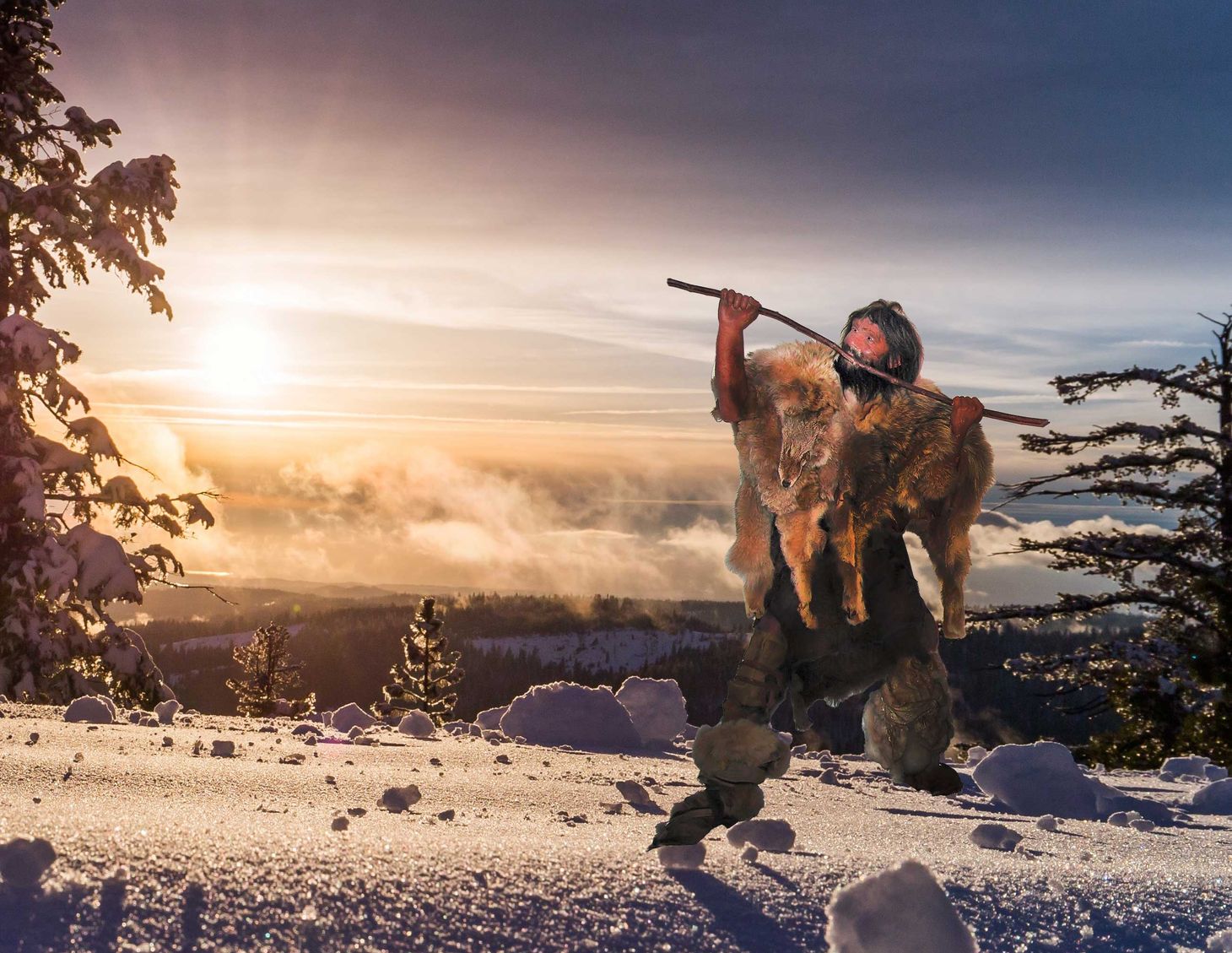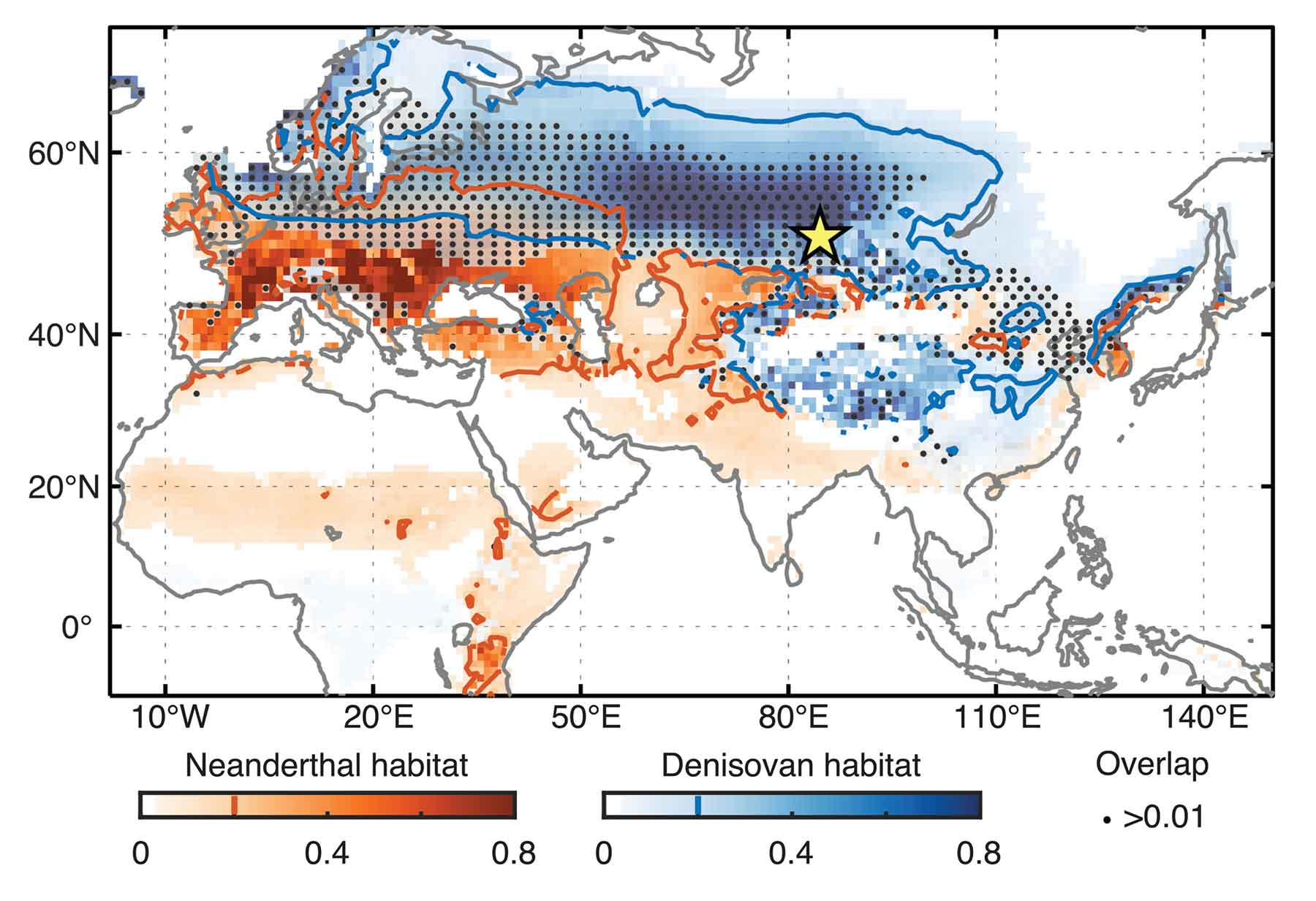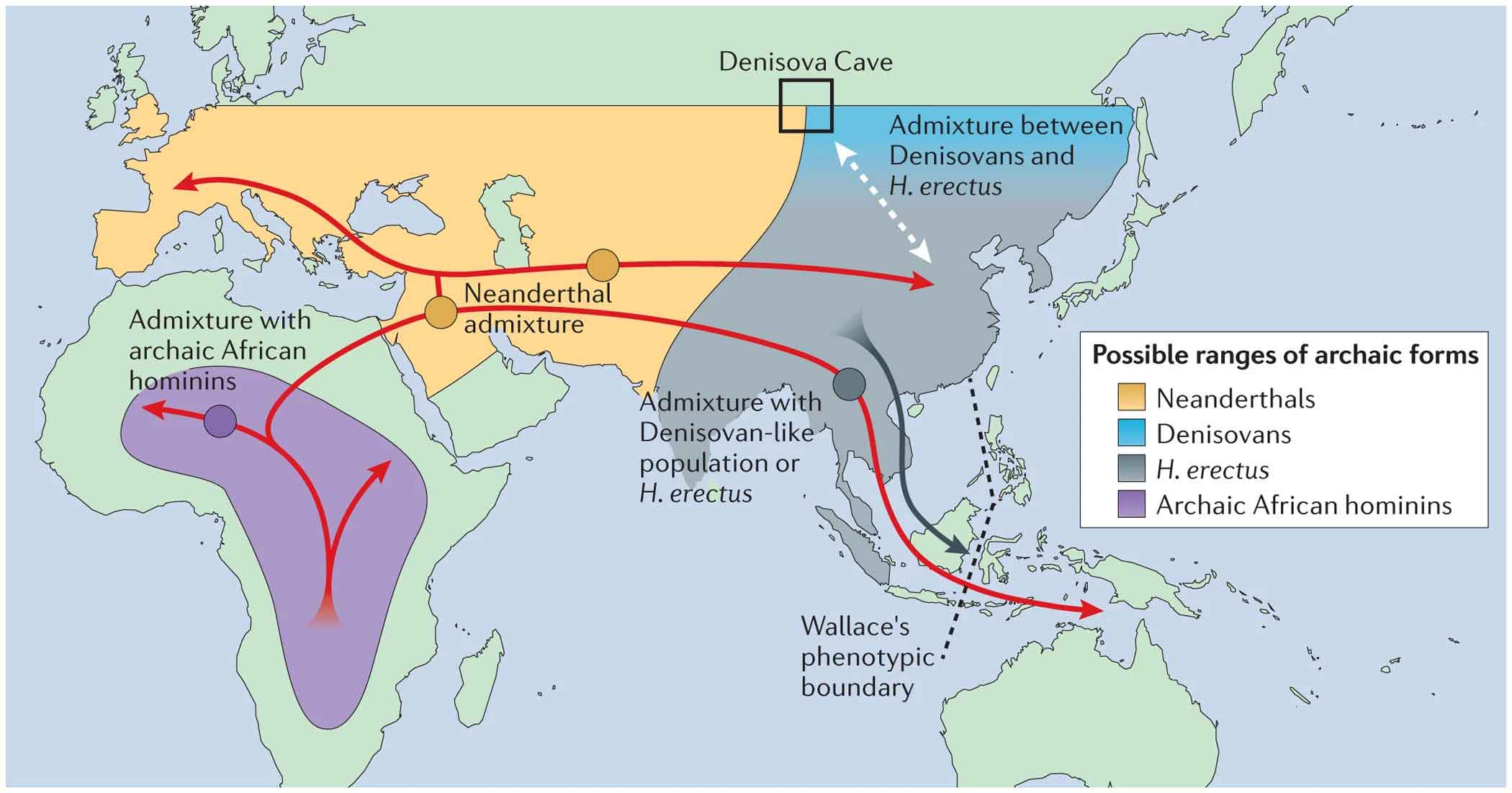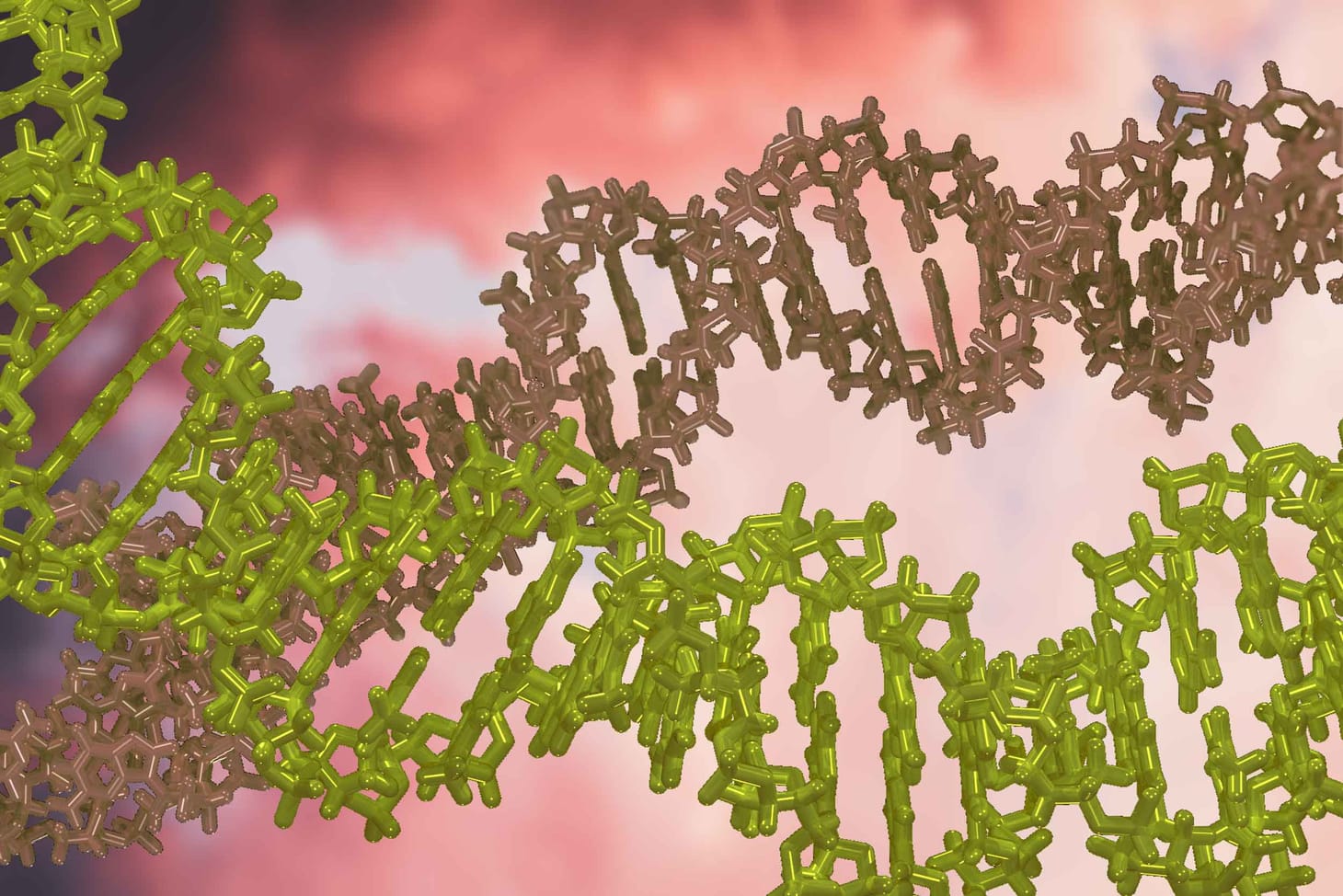Climate models, Neandertals, and Denisovans
A new paper on biogeography of Neandertals and Denisovans raises ideas about the interactions of these groups.

Today most scientists think that ancient climates mattered to the course of human evolution. But they do not agree on exactly how climates mattered. Some have proposed that features of ancient hominin populations like brain size or body size tracked changes in climate over time. Some think that ancient climate changes deprived hominin populations of key habitat, or created migration corridors enabling populations to enter new regions. Still other scientists have emphasized extreme climate variability as a challenge for hominin populations, favoring those who could adapt by learning to cope with change.
Some would say, “all of the above.”
With so many different ways that climate might have mattered to many different populations, any model of climate-hominin relationships has a large number of degrees of freedom. Testing such a model requires a lot of data. When it comes to ancient hominins, gathering data is a big challenge.
As a result, anthropologists have more ideas about climate's importance to our evolution than testable hypotheses. Many of those ideas go back a long way.
Last week, Science published a new paper exploring the biogeography of Denisovan and Neandertal populations. The research, by Jiaoyang Ruan and collaborators, applied supercomputers and paleoclimate models to the geographic coordinates of archaeological sites that have produced evidence from Neandertals or Denisovans. The paper has some great ideas in it. The authors take seriously the idea that hominin populations would have moved when climate changed, and they shaped their analysis to work out where Neandertals and Denisovans may have come into contact and mixed. I like this approach a lot.
Still, despite the paper's strengths, any analysis of how hominins related to ancient climates suffer from the weakness of the fossil and archaeological data. We just don't know enough about where Denisova-like populations lived. Recent discoveries of protein evidence from Baishiya Karst Cave, China, and internal tooth morphology from Tam Ngu Hao 2, Laos has brought us to three sites with evidence of relationship to the Denisova 3 genome. These are remarkable, but three sites is not enough to build any confidence that we know the habitat preferences of a highly diverse hominin group.
Northern limits
With weak underlying data on the Denisovan distribution, the paper's conclusions are shaped strongly by how the three known sites relate to the paleoclimate record. Two of those sites, Denisova Cave itself and Baishiya Karst Cave in Xiahe county, China, are relatively cold, and both are projected to have been colder during parts of the Pleistocene when Denisova-related populations may have lived there. Neither site is outside the range of cold weather encountered by Neandertals, but that doesn't really matter: Neandertal cold sites are a small fraction of their known sites, while Denisovan cold sites make up two-thirds of the record. Based on these data, the paper concludes that Denisovans may have been successful across a large swath of northern Eurasia, giving rise to possible contact and mixture with Neandertals across most of that area.

I doubt this part of the results. Sure, it's possible that Denisova-related populations had more extreme cold tolerance than Neandertals, but I would first test whether the limited data show any difference. Having spent some time at Denisova Cave, I know how challenging it would have been for any Pleistocene group to survive in this region. Neandertal and Denisovan populations alternated here over thousands of years, with no clear difference in subsistence strategies. It's tough for me to conclude that one of these groups was better than the other.
Still I think the main conclusion of the paper is probably accurate: These populations could have interacted across a large geographic space. A point in favor of this idea is one site that Ruan and coworkers added on the Neandertal side of the balance: Jinsitai Cave in north China. That site was described in a 2018 study by Feng Li and coworkers, who noted technological similarity between the artifacts from Jinsitai and those from Altai sites some 3000 km to the west. In their view, the makers of these artifacts were connected culturally or genetically to the groups who made the Altai Mousterian. Were there Neandertals at Jinsitai? Li and collaborators discussed the possibility, although the evidence could not rule out that Denisovans or even modern humans made these Mousterian tools. To me, the interesting question is not whether the Jinsitai archaeology was made by eastern Neandertals, but instead to what degree the cultural similarities reflect cultural interactions of populations.
The study by Ruan and coworkers prompts exactly this kind of question. Nothing stood in the way of these hominin groups traversing long distances across similar habitats. Connections of populations should have been possible across a wide span of time and space.
Sources and sinks
I have been frustrated by past studies that show Eurasia bisected by a line to show where Neandertals and Denisovans lived. I think of this as a Napoleonic view of ancient human behavior—the notion that ancient groups maintained frontiers that they rarely crossed. Of course not even Napoleon managed to maintain frontiers for more than a decade. The idea that such a line could have meaning for understanding hominin behavior over tens or hundreds of thousands of years is fiction.

If the Napoleonic model were correct, archaeologists would not find sites like Jinsitai Cave with its technokit resembling sites 3000 km to the west. Denisova Cave, with its 300,000-year alternating cast of Denisovan and Neandertal populations, including hybrids of the two, would be unbelievable.
Yet DNA evidence tells us that some ancient groups did maintain partial isolation from each other for hundreds of thousands of years. Denisova Cave, with its abundant evidence of population mixture, really is a paradox. If populations mixed so often, how did they stay separate over their evolution?
Back in 2009, I started writing about the importance of source-sink population models in human evolution. I noticed at the time that many researchers imagined hominin adaptations at a species-wide level without considering the advantages or disadvantages posed by local environments. Hominin populations were interconnected across large geographic areas where some places were better for survival and reproduction than others. Some local populations were stable population sources, always sending emigrants to other places. Others were net population sinks, always receiving immigrants from sources and on balance not maintaining their local population over the long term. Even high rates of local mixture may make little difference to the evolution of structured populations if it happened in areas that were net population sinks.
After I wrote about this, other scientists including José Bermudez de Castro, María Martinón-Torres, and Robin Dennell began to explore what a source-sink model might mean for hominin populations in Asia. Denisova Cave, with strong evidence of successive replacements by different Neandertal and Denisovan populations over nearly 300,000 years, may provide the strongest example of a population sink in the hominin record.
What remains to be seen is whether adaptation to local conditions was important to the long-term partial isolation of Neandertal and Denisovan-related populations. The conclusion I draw from Ruan and colleagues' study is that no strong east-west climate barriers could have kept these populations apart for the hundreds of thousands of years of their evolution. That leaves open the possibility that other aspects of the environment besides temperature, rainfall, and general biome composition could have shaped their evolution. The alternative is that the survival and local success of hominin groups was itself so patchy over the long term that only a handful of lineages could persist.
Notes: In 2009, I discussed source-sink population dynamics and the way they might influence adaptation in Neandertal populations:

I have returned to the topic several times over the years. Maybe the most relevant to the current post is my answer to a question from Ajit Varki: Why don't we see more recent populations with a higher proportion of ancestry from Neandertals or Denisovans?

References
Bermúdez de Castro, J. M., & Martinón-Torres, M. (2013). A new model for the evolution of the human Pleistocene populations of Europe. Quaternary International, 295, 102–112. https://doi.org/10.1016/j.quaint.2012.02.036
Chen, F., Welker, F., Shen, C.-C., Bailey, S. E., Bergmann, I., Davis, S., Xia, H., Wang, H., Fischer, R., Freidline, S. E., Yu, T.-L., Skinner, M. M., Stelzer, S., Dong, G., Fu, Q., Dong, G., Wang, J., Zhang, D., & Hublin, J.-J. (2019). A late Middle Pleistocene Denisovan mandible from the Tibetan Plateau. Nature, 569(7756), Article 7756. https://doi.org/10.1038/s41586-019-1139-x
Demeter, F., Zanolli, C., Westaway, K. E., Joannes-Boyau, R., Duringer, P., Morley, M. W., Welker, F., Rüther, P. L., Skinner, M. M., McColl, H., Gaunitz, C., Vinner, L., Dunn, T. E., Olsen, J. V., Sikora, M., Ponche, J.-L., Suzzoni, E., Frangeul, S., Boesch, Q., … Shackelford, L. (2022). A Middle Pleistocene Denisovan molar from the Annamite Chain of northern Laos. Nature Communications, 13(1), Article 1. https://doi.org/10.1038/s41467-022-29923-z
Dennell, R. W., Martinón-Torres, M., & Bermúdez de Castro, J. M. (2011). Hominin variability, climatic instability and population demography in Middle Pleistocene Europe. Quaternary Science Reviews, 30(11), 1511–1524. https://doi.org/10.1016/j.quascirev.2009.11.027
Li, F., Kuhn, S. L., Chen, F., Wang, Y., Southon, J., Peng, F., Shan, M., Wang, C., Ge, J., Wang, X., Yun, T., & Gao, X. (2018). The easternmost Middle Paleolithic (Mousterian) from Jinsitai Cave, North China. Journal of Human Evolution, 114, 76–84. https://doi.org/10.1016/j.jhevol.2017.10.004
Ruan, J., Timmermann, A., Raia, P., Yun, K.-S., Zeller, E., Mondanaro, A., Di Febbraro, M., Lemmon, D., Castiglione, S., & Melchionna, M. (2023). Climate shifts orchestrated hominin interbreeding events across Eurasia. Science, 381(6658), 699–704. https://doi.org/10.1126/science.add4459
John Hawks Newsletter
Join the newsletter to receive the latest updates in your inbox.




